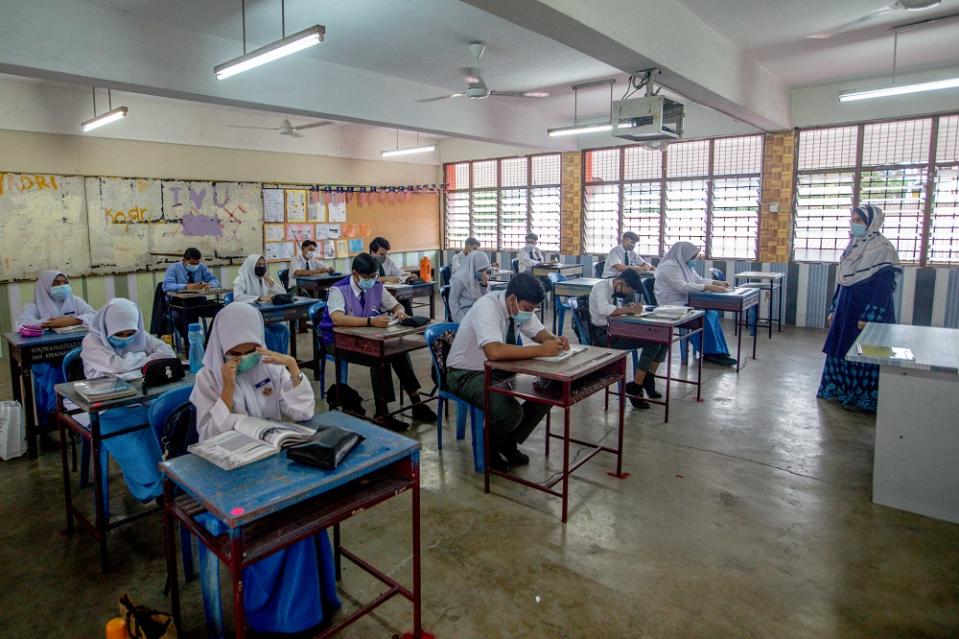How safe are our schools? Study notes over 1,000 testimonies so far from sexual harassment to rape and bullying

KUALA LUMPUR, Dec 1 — Seeking a safe environment for children to learn, two civil organisations recently released a joint report containing 1,145 testimonials of abuses that happened in Malaysian educational institutions ranging from kindergarten to colleges.
From the total 1,145 accounts, the report by women’s rights group All Women’s Action Society (Awam) and safe space Instagram account Save The Schools MY (STS) identified 1,495 violations.
Almost 70 per cent, or 1,046 violations, were categorised as sexual harassment.
Another 299 violations were categorised as bullying, and 74 more were “period spot checks”. The remaining 76 fell into “other” violations.
According to the report, more than one-third, or 38.8 per cent, of the incidents in these testimonials involved multiple survivors in each incident, while nearly a quarter or 24.4 per cent of people who testified experienced multiple forms of abuses in their schooling days.
STS founder Puteri Nuraaina Balqis, 26, told Malay Mail that the report showed that no school or state in the country is safe from the “monstrosity” of abuse.
She hopes the report will reach the eyes of those with the power to make changes to the school system.
“The fight to make schools safer will continue to be there until game-changing policies, executable mechanism and mindset shifts in viewing rape culture, sexual harassment and abuse experience in schools are happening, which is not in the nearest time.
“This report is backed with data and statistics, which is something that National Union of the Teaching Profession was so concerned about, so here it is.
“One case is already too many, let alone 1,145 incidents of violence. And imagine the horror when we think about the victims out there who aren’t aware of this platform, or still keeping it to themselves. It might be thousands or even millions more,” she added.
According to the report, the testimonials were gathered from two different periods this year — 770 testimonials from April 26 to August 13, and another 275 from between April 16 and 26. The report did not indicate when the abuses happened or if all those who experienced them were students.
Instead, the survivors were recorded as 91.8 per cent female, 5.3 per cent male, and 0.1 per cent identified as non-binary.
Another 0.4 per cent of incidents reportedly involved both genders, while 2.4 per cent of the survivors’ genders’ were undisclosed.
Types of sexual abuses
Of the sexual harassment violations, verbal abuses (36.9 per cent) was highest, followed closely by physical (35.2 per cent) and gestural (13 per cent).
Alleged rape consisted of 2.7 per cent of all physical sexual harassment violations. The youngest person to provide testimony in the report was recorded as just eight years old.
The vast majority of all sexual harassment violations at 89.2 per cent were reported to have occurred in primary or secondary schools. The remaining cases were recorded in kindergartens, universities, colleges and other institutions of learning.
Perpetrators of sexual harassment were 87.1 per cent male, with the remaining being females or of an undisclosed gender.
Peers were the largest group of perpetrators (440 male, 17 female, 15 undisclosed), followed by teachers (280 male, 25 female, 15 undisclosed) and religious teachers (85 male, 12 female).
Based on the testimonials, incidents happened in all states and Federal Territories, with the most being in Selangor (367), Kuala Lumpur (128), Johor (91), Sarawak (87) and Sabah (67). One testimonial detailed a case outside of Malaysia.
A total of 23.9 per cent of incidents of abuse showed psychosocial consequences that affected survivors’ mental health, school life, relationships and even livelihood.
There were 17 formal diagnoses of mental health conditions, with anxiety and depression making up close to 75 per cent of them.
Yesterday, teenager Ain Husniza Saiful Nizam — who made headlines in May after claiming her teacher had made jokes about rape, in her class — received notification of a defamation suit from said teacher.
In response, Awam called on the Ministry of Education (MoE) to “uphold their commitment to student welfare” and prioritise long-term solutions that would create a culture of zero tolerance against sexual harassment in educational institutions.
“Implement regular gender awareness and sensitisation training among school figures of authorities nationally, as well as incorporate modules on gender awareness and sensitivity in the curricula and teachers’ code of conduct in teachers’ colleges or training institutions,” Awam wrote in a statement.
It also called on MoE to update its guidelines on the management of sexual harassment cases as well as monitor its implementation in schools.
On “period spot checks”, Awam asked MoE to make clear what reporting mechanisms are available, what actions will be taken against perpetrators and survivor redress.
Related Articles Teresa Kok urges education minister to make stand clear after teacher accused of rape jokes sues ex-student Former physical education teacher accused of rape jokes sues student Ain for alleged defamation ‘Ask the Education Ministry,’ says national unity minister regarding Chinese school signboard debacle


